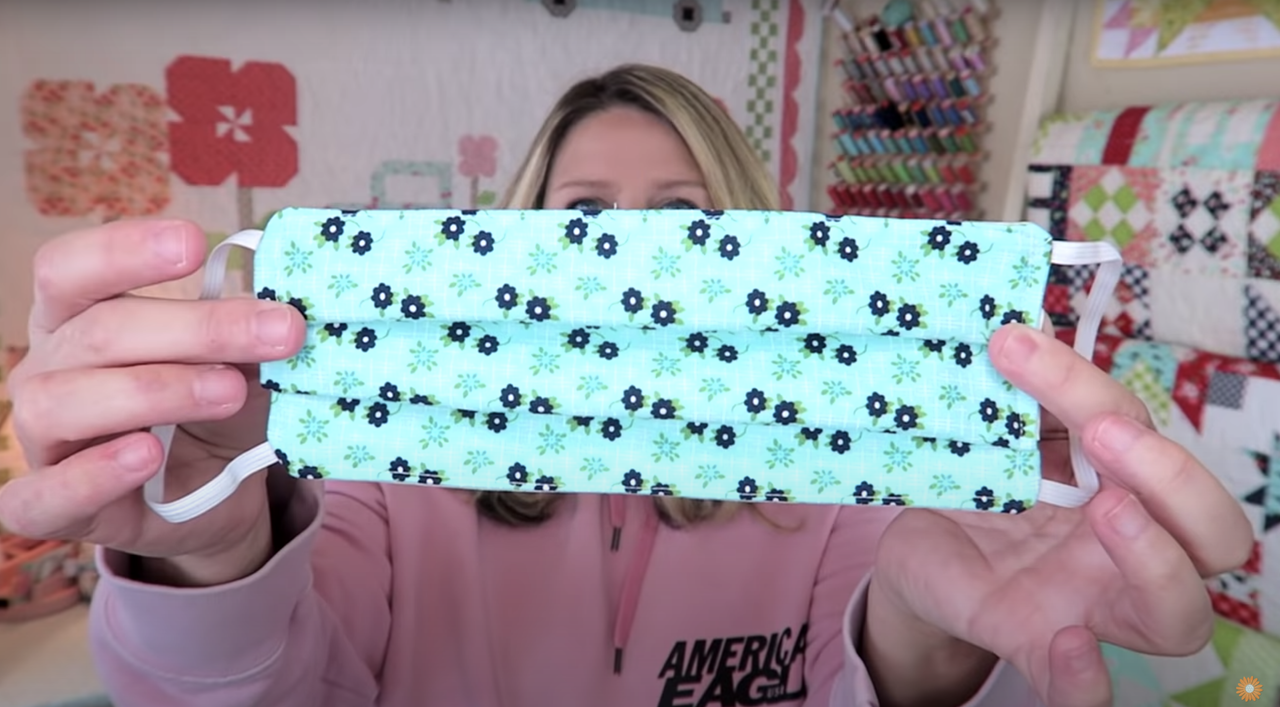

With medical-grade face masks in seriously short supply, many of us are having to look elsewhere. We've hunted down where to buy face masks right now, but let's say you need something immediately, and need to know how to make your own face mask. In this article, we've found some handy tutorials to help.
That includes which fabrics work best as filters, according to the research that's been done so far. About to tie a bandana round your face? Or fashion something using a vacuum cleaner bag? Read this first.
- Keep you home germ-free – here's where to buy Lysol spray
How to make a face mask: the best tutorials to try
If you want to keep things basic, the CDC has two super-simple tutorials to try. All you need for the sewn version is a needle and thread, two rectangles of cotton fabric, and elastic (or string, at a push).
Need to get hold of fabric? Here are some places to try:
- JOANN (US)
- Michaels (US)
- Fabric.com (US)
- John Lewis (UK)
- Etsy (UK)
If you don't have a needle and thread, the CDC has a tutorial for you too. This one uses just an old T-shirt and some scissors.
- Try the CDC no-sew face mask tutorial
If you're willing to try something slightly more complicated, have a go at this video tutorial. It's still pretty simple, but includes pleats. This homemade face mask uses cotton quilting fabric and flannel.
- Here's where to buy hand sanitizer
- ... and where to buy Clorox wipes and other cleaning products
- Need to check for a fever? Pick up one of the best thermometers
Homemade fabric face mask guidelines
There are some rules of thumb to pay attention to when creating your own homemade face mask. The mask should fit snugly against your face and nose (leaky masks are less efficient); be able to be washed without changing shape or becoming damaged (you'll need to be able to launder it to keep it germ-free); and allow you to breathe comfortably (explanatory).
Sign up to the T3 newsletter for smarter living straight to your inbox
Get all the latest news, reviews, deals and buying guides on gorgeous tech, home and active products from the T3 experts
The CDC says homemade masks should use multiple layers of fabric, and recent research suggests that using layers of different materials can also help improve filtration (for example, cotton/silk, cotton/chiffon, cotton/flannel).
What materials make the best filters?
One fashion designer has embarked on an experiment to find out which household materials are the most effective at filtering particles, for those people having to get creative and put together our own homemade face coverings.
Designer Chloe Schempf's original experiment was picked up by particle testing equipment company TSI, and the company worked with Schempf to provide the means to test the masks to the same standard as the official N95 masks.
The experiment focused on a whole range of materials people were using to fashion their own protective coverings, from a standalone basic bandana, to makeshift filters such as paper towels, vacuum cleaner filters and blue shop towels, which could be slotted into a face mask filter pocket. Different combinations of various materials were also tested. The effectiveness of the material also took into account how hard the fabric was to breathe through.
The results found that while nothing got close to the effectiveness of the N95 mask (which filters least 95% of particles that measure 0.3 microns), the most effective homemade solution was one layer of Filti face mask material and one layer of 6.5g cotton ripstop fabric.
The second most effective combination was two layers of layers Kona 100% cotton and one layer of 1500 Filtrete Furnace Filter. A folded bandana was almost at the bottom of the pile when it came to effective filtering (although it's still much better than nothing), and similarly you might want to stick to using your Braun coffee filter for coffee, as that wasn't too good either.
The experiment also underlined the importance of fit when it comes to how effective a face mask is. See the full findings here.
Ruth is a lifestyle journalist specialising in sleep and wellbeing. She has tested more mattresses than her small flat can handle and will talk at length about them to anyone who shows even a passing interest, and has had to implement a one-in-one-out pillow policy for fear of getting smothered in the night. As well as following all the industry trends and advancements in the mattress and bedding world, she regularly speaks to certified experts to delve into the science behind a great night's sleep, and offer you advice to help you get there. She's currently Sleep Editor on Tom's Guide and TechRadar, and prior to that ran the Outdoors and Wellness channels on T3 (now covered by Matt Kollat and Beth Girdler-Maslen respectively).
-
 Oscar-winner’s first TV show ever suddenly crashes Netflix’s Top 10
Oscar-winner’s first TV show ever suddenly crashes Netflix’s Top 10If you loved 24 or Homeland, then Zero Day is your new must-watch show
By Mike Lowe Published
-
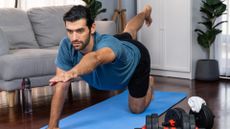 Three bodyweight exercises to strengthen your core and lower back, according to an expert
Three bodyweight exercises to strengthen your core and lower back, according to an expertA stronger core can relieve pain, reduce injuries and help you move better
By Bryony Firth-Bernard Published
-
 Simba reveals 3 shocking signs of sleep deprivation on the body
Simba reveals 3 shocking signs of sleep deprivation on the bodySimba’s latest study reveals the main physical effects of sleep deprivation
By Bethan Girdler-Maslen Published
-
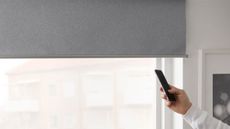 I’m a smart home expert – here are 5 smart blinds I'd recommend for a better night’s sleep
I’m a smart home expert – here are 5 smart blinds I'd recommend for a better night’s sleepFrom SmartWings to IKEA, here are the smart blinds worth knowing about
By Bethan Girdler-Maslen Published
-
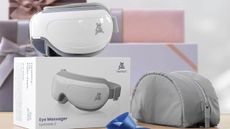 This smart sleep mask massages, plays music and eases facial tension
This smart sleep mask massages, plays music and eases facial tensionThe Bob and Brad Eyeoasis 2 is a must-have for bad sleepers and screen users
By Bethan Girdler-Maslen Published
-
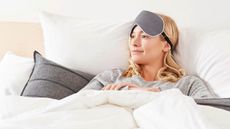 This Panda London eye mask proves that the key to sleep is simplicity
This Panda London eye mask proves that the key to sleep is simplicitySleep masks: let’s go back to basics
By Bethan Girdler-Maslen Published
-
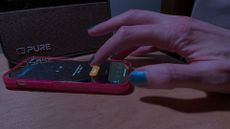 I tried a sleep tracking app during my most sleep-challenged time of year – here's what I found out
I tried a sleep tracking app during my most sleep-challenged time of year – here's what I found outSleep Cycle can help improve your sleep routine, but could it make Christmas followed by a week of starring in a pantomime less exhausting?
By Jim McCauley Published
-
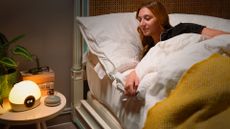 Waking up for work is tough in the winter – but smart tech can help you avoid that snooze button
Waking up for work is tough in the winter – but smart tech can help you avoid that snooze buttonHow smart tech makes winter mornings run smoother
By T3.com Published
-
 This smart sleep headband is designed by neuroscientists to help treat insomnia
This smart sleep headband is designed by neuroscientists to help treat insomniaAre headbands the new sleep technology trend?
By Bethan Girdler-Maslen Published
-
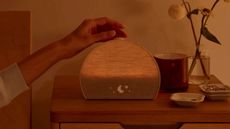 Hatch’s latest sunrise alarm clock finally has a phone-free design – and I’m obsessed
Hatch’s latest sunrise alarm clock finally has a phone-free design – and I’m obsessedHatch launches the Restore 3 wake-up light and it could drastically improve your mornings
By Bethan Girdler-Maslen Published